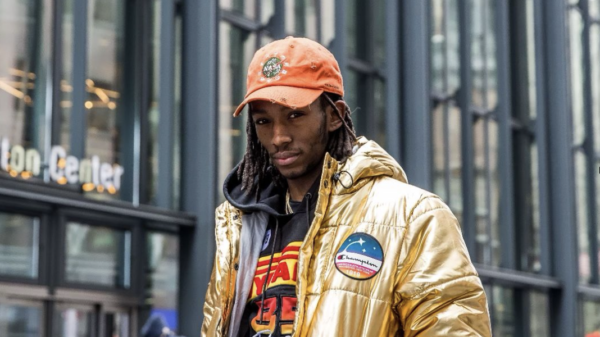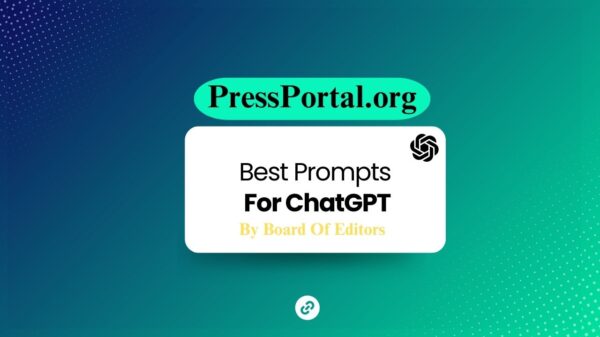Author Peter Ames Carlin, who previously wrote the biography “Bruce,” digs into the origins of one of Bruce Springsteen‘s most beloved albums 50 years after its release in his new book, “Tonight in Jungleland: The Making of Born to Run.” Carlin conducted new interviews with Springsteen, the E Street Band, and more for the book, which is on sale now. The following excerpt takes us into the studio with Springsteen and the band as they tackle “Jungleland.”
When the Columbia Records executives finally got back to manager Mike Appel about “Born to Run” in the fall of 1974 the response was essentially positive. They liked the song, they liked the guitar riff, they liked what they could hear of Bruce’s vocal. But there was so much music on the thing. It sounded so dense: the acoustic piano, the electric piano, the organ, the synthesizer, the glockenspiel, the saxophone, the electric and acoustic guitars, the strings and backing vocals layered so thickly atop the bass and drums that even Bruce’s stage-steeled voice couldn’t cut through the noise. “I guess it wasn’t an easy song to absorb when you first heard it,” Bruce says. “Now people have heard it a thousand times, so it all sounds perfectly natural, right? But at first people said it sounded noisy.”
All too aware of the precariousness of his standing with the company, Bruce and Appel did not want to come off as inflexible. “So we went into some local Columbia studio in New York one night and we tried to remix it. But we couldn’t even get close.”
The problem, he says, stemmed from both the complexity of the recording — so many instruments on so many tracks — and the relatively primitive technology of the era. In the days before digital equipment allowed a single technician to manipulate each note on dozens of tracks with the push of a button, the analog recording consoles of the 1970s were controlled by faders, one for each track, that had to be manipulated by hand as the music played. So if you wanted to raise the volume of the saxophone for a particular phrase, you had to have at least one hand ready to elevate that track for however long, while another hand lowered another instrument or vocal track to make room. Then the sax would need to fade down again, and the vocal, or other featured instrument, would have to be elevated. And since the voices and instruments shift constantly in most recordings (the casual listener might not notice, particularly if it’s a good mix), the mixing required a lot of hands poised on a lot of faders, all to get a sound that captures a feeling that is, at best, elusive. “No two mixes could ever be alike,” Bruce continues. “Particularly in a song with 72 tracks of information on, I don’t even know, maybe 16 tracks of tape.”
Editor’s picks
They worked deep into the night before they finally realized that the original mix, the one they’d put together the previous summer, was the only one that captured the essential fear, dread, awe, and excitement that animated “Born to Run.” They trashed the new attempts at a mix and stuck with what they had. But it wouldn’t be the last time work on the new music dragged deep into the night, only to deliver them to a dead end.
January 1975. It was late in the evening, the clock hands circling toward midnight, and Bruce and the band were in 914 Sound Studios, their usual recording headquarters in Blauvelt, New York. Mike Appel led the session from behind the board, with the engineer Louis Lahav at his side and a scattering of staff, friends, and other hangers-on lurking here and there. The filmmaker Barry Rebo was there too, trying to be as unobtrusive as possible as he kept to the edges, following the action with a video camera on his shoulder. There was tension in the air, but it had nothing to do with Rebo or the gaping lens of his camera.
The thing was, they couldn’t get a good drum sound. Max Weinberg sat at his set, thwacking his floor tom, while Lahav fiddled with his dials, stalked into the studio to unplug, replug, and then just physically move the microphone closer to the set, then to the side, and then farther away. But the drum sound wasn’t nearly as dismaying as the studio’s piano, which kept slipping out of tune. They took a break for dinner and called for the piano tuner, a squat middle-aged fellow who smoked a cigarette while he sat at the keyboard and spun his tuning lever, striking the keys, bending the sound this way and that. The musicians ate with plastic forks out of sectioned Styrofoam boxes while making small talk about movies; Woody Allen’s spoof adaptation of Everything You Always Wanted to Know About Sex (But Were Afraid to Ask), some classic film starring John Garfield whose title they couldn’t remember, and then, because someone had brought a balloon in for them to bop around the studio, the arty French children’s film The Red Balloon. This inspired a vivid performance of the film’s sole bit of dialogue, the little boy’s cries of “Ballon! Ballon!” as he chases his runaway magical balloon through the streets of Paris.
Related Content
When the tuner finished on the studio floor he took Appel aside and explained the real problem: The piano’s soundboard is cracked, he said, and wouldn’t hold a tuning for more than half an hour, no matter what he did. He was happy to stick around all night, but he’d need to be paid $10 an hour throughout. Appel nodded, said thanks, but sent him away. Turning to someone else, he explained his reasoning: they couldn’t afford to add someone else to the night’s payroll. “Just don’t tell Bruce, OK?” Speak of the devil, Bruce swung through the studio door, saw the tuner packing up, and called back into the control room: “Let’s do another take! Roy!”
Back in the studio, the musicians filed in, picked up their instruments, and tuned up. Bruce, in jeans, a T-shirt, and a leather jacket, shouldered his guitar and launched into a jam built around a simple twelve-bar blues, firing off some solos, making room for Clemons to honk along. They went around a couple of times before Appel’s voice boomed over the intercom: “Let’s get back to ‘Jungleland’!”
Fifty years later Bruce regards the song with a kind of awed detachment. Standing in front of the fireplace, poking at the embers, he can’t quite say where “Jungleland” came from, or how it found its eventual form. “I wrote ‘Jungleland’ on the piano in West End Court in Long Branch,” he says. “I don’t remember a whole lot about writing it. It must have taken a while. I don’t know where the lyrics came from, except that was the style I was writing in those days. The Rangers had a homecoming in Harlem . . . I was just writing in this operatic, somewhat Broadway-esque style. Rock ’n’ roll images, outsider characters. I was just doing my own thing.” He heads back to his chair, sits down, shrugs. “It’s just one of those things that come out of you. You don’t know where it is, you don’t know how it came out of you, and you’ll never do it again.”
The song appeared to Bruce in the early months of 1974. “Jungleland” came as a kind of expansion on the world he’d envisioned for The Wild, the Innocent’s “Incident on 57th Street,” with two young lovers navigating the city’s cruel blocks in search of some form of deliverance, or perhaps just a few moments of peace. In this new version, the star-crossed lovers are the Magic Rat and a barefoot girl he finds hanging out with a gang of outlaws called the Rangers somewhere in Harlem. Together they climb into his car and head down Flamingo Lane, trailing a line of lit-up police cars bent on bringing the lovers down. The reason for the officers’ fury is unstated, except as the latest skirmish in a war between authority and the young outsiders who gather themselves into gangs and rock bands. The distinction between the street fighters and the musicians vanishes in the reflected light of the night in this early version, where kids flash guitars just like bayonets, hustling for the record machine . . . [they] face off against each other out in the street down in Jungleland. Whether they’re hustling to spin their favorite songs on the jukebox or to build new lives in the music business — which you might also think of as the record machine — is indefinite.
This blurring of the line between street gangs and rock bands, the interchangeability of instruments made for the musician’s stage and for the warrior’s battlefield, is deliberate and meaningful. It speaks to not just Bruce’s understanding of compelling images but also his sense of being under siege as he struggled to maintain his control over his music in a rough and unforgiving business. He was, quite literally, hustling for the record machine, chased down the roads of his imagination by squad cars full of disapproving executives, sirens blaring and guns trained on his back. Boys flash guitars like bayonets and rip holes in their jeans, he wrote in one early version, where the cops set off a laser show that lights up the sky and, in his words, rip[s] this holy night. He would eventually revise the lyrics, but the urban setting, and the tangled skeins of excitement, awe, and dread, were set.
He was less sure about the piece’s musical backdrop. The first verses unspooled over a simple I-V-IV progression, one of the most fundamental sets of chord changes in folk and pop music, each verse ending with a brief upward progression that climbed back to the root chord in time for the next set of lines. The narrative set the scene, the kids hanging around waiting for something to happen, and introduced the couple at the center of the story, then put them in motion before giving way to an instrumental section. The backing gained volume and intensity while Clemons blared over the top, riffing over the verse chords until a sudden pivot sent the music into a new key and an entirely new chord pattern. It’s the music that would eventually backdrop the finished song’s aching saxophone solo.
Now a searing guitar line held forth, but only briefly before giving way to an elegantly swinging piano and sax, as if the song had walked off the street and into a smoky jazz club. More instruments joined and together they picked up momentum until it resembled the rampaging solo section in “Kitty’s Back,” but again, the music screeched to a halt, the pianist tickling a quick bluesy run that swept the other musicians aside. A few beats of silence, then Bruce started singing, alone but for the piano, describing the street as a classic death waltz/Between flesh and fantasy. Another verse played over the familiar chords, the band now behind him, back where the song began. Here the Magic Rat returned. The Rat chased his dream into a subway tunnel, moments before a train came roaring through. The girl assumed the worst and headed home to bed, but then the story took another turn. The Rat reappeared, alive and well on Flamingo Lane, just as the girl reappeared, and they walked off together, vanishing together into Jungleland.
A happy ending, of sorts. And a whole new frontier in the band’s musical eclecticism. They started performing the piece during the summer of 1974, and audiences seemed enraptured while they played it, even if the applause at the end was closer to respectful than ecstatic. Certainly, elements of “Jungleland” were working. Bruce just had to pull them apart and see if he could figure out how to put them back together in a way that made both musical and narrative sense. What he didn’t realize, back in mid-1974, was that the paroxysm his band was about to endure, the loss of its pianist and drummer, would transform his group, tighten his sound, and, with surprising speed, clarify his vision for the new album, and “Jungleland” in particular.
On that night in January 1975 at 914 Sound Studios in Blauvelt, it had been five months since the Bottom Line performance, and “Jungleland” had evolved significantly. The jazz club digression was gone, and the second instrumental section had been moved to the second half of the tune, where it set the stage for the song’s new, far more powerful conclusion.
In the studio, Lahav sat at the mixing desk trying to get a fresh level for Tallent’s bass, and Weinberg’s drums still didn’t sound right, so he went back to thumping the floor tom, thump, thump, thump, thump. Then there was more jamming, the central riff of Elvis Presley’s “Burning Love,” then the chorus of “The Hustle.” Then, finally, they got back to “Jungleland.” Bruce led a quick run-through of a sticky part, then the whole band played through the first couple of verses, getting the rhythm back into their bones before finally trying a fresh take. It started with the song’s new instrumental introduction. What had once been a simple piano prelude had been revised into an elaborately orchestrated Spanish-style piece, with dramatic violin flourishes, rattling castanets, and booming drums that, for the thirty seconds it lasted, sounded like the prologue to a bullfight.
Bruce listened in the control room, thoughtfully eating Junior Mints until the take broke down again, and they went back to worrying over the drum sound. “Max, hit the tom-tom,” Appel said. This went on for a bit, then the band started in again, playing the instrumental part that built to the final verse until Lahav interrupted them so he could do something to the balance. Then Bruce looked up and gestured with a drumstick. “Right now there’s not enough sound,” he said. “There’s no roundness in the tone . . . I don’t get . . .” He waved his hands, reclining on the sofa in the control room, collapsed on his side. Finally he shrugged. “Should we let everyone take a break?”
It continued like this for some time. Hours on end. The musical breakdowns, the progress lost for want of a fuller drum sound or of chord inversions that would eliminate the most painfully out-of-tune notes on the already-slipping piano, or because the engineer cut in when he thought the rhythm section rushed the verse. Are engineers supposed to have opinions about the band’s feel? They finally got a decent instrumental take, but Bruce, now standing in the vocal booth, told Appel he wanted to try another. Headphones clamped over his ears, eyes shut, he swayed to the rhythm and tried to disappear into his lyrics, determined to breathe life into the most emotionally and narratively complex song he’d ever written. Rebo, his video camera just beyond the glass of the vocal booth, shot in close-up until the take broke down and Bruce, opening his eyes, realized for the first time how closely he was being observed. “Umm, Barry,” he said, gently but firmly. “You can’t be doing this when I’m doing this.”
They started again, stopped again, started again. Even five decades later, it’s hard to watch. But for Jon Landau, invited by Bruce to come and observe, the scene at 914 was shocking. “That was murder,” he says. “Bruce suggested that I come around as a friend to watch, and it was terrible. Just murder.”
Landau had only produced two albums and a few other recording sessions, but he’d done them in professional studios and had been to enough sessions with other artists to know how it was supposed to work. “In a good studio there is a technician on the premises so [an out-of-tune piano] doesn’t stop your session, the guy can adjust it very quickly.” Toss in the sensitive electronic equipment in the control room, also prone to breaking down, and the perpetual problems with the room’s resonance and how it seemed to evade all their attempts to get the right drum sound. “They couldn’t get any momentum going,” Landau says.
Trending Stories
Chatting with piano player Roy Bittan outside the studio as the hours tilted toward dawn, the journalist was reminded that the building they were spending the night in had originally been a gas station, only recently converted to its new purpose. The pianist had played recording sessions with other artists before, and he knew the dynamics of a more professional operation. He could only shrug while Landau shook his head. “What the fuck,” Landau wondered aloud, “are we doing here?”
From TONIGHT IN JUNGLELAND: The Making of Born to Run by Peter Ames Carlin, published by Doubleday on August 5, 2025. Copyright © 2025 by Peter Ames Carlin.





























